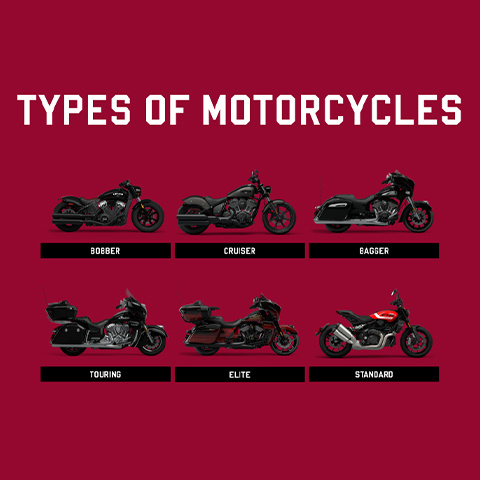What Does Motorcycle Boots Mean?
What Does Motorcycle Boots Mean?
Blog Article
The Best Strategy To Use For Motorcycle Boots
Table of ContentsA Biased View of Motorcycle BootsThe smart Trick of Motorcycle Boots That Nobody is Talking AboutThe Best Guide To Motorcycle BootsThe Only Guide for Motorcycle BootsThe smart Trick of Motorcycle Boots That Nobody is DiscussingGetting My Motorcycle Boots To Work
Motorcycle components and systems for a motorbike are crafted, produced, and constructed in order to create motorcycle versions with the preferred performance, aesthetics, and price. The crucial parts of modern-day bikes exist below. The framework of a motorbike consists of the frame and suspension, along with the front forks, of the car.Carbon fibre, titanium, and magnesium are used in a couple of extremely costly customized structures. The framework includes the head tube that holds the front fork - motorcycle boots and enables it to pivot. Some motorcycles consist of the engine as a load-bearing stressed out participant; this has been used throughout motorbike history but is currently coming to be a lot more typical.
It was widely out of favor and normally considered a poor concept at the time. Today it is an utilized on some "thumpers" (single-cylinder four-strokes) that generally have dry-sump lubrication requiring an exterior oil storage tank. It has because acquired some cachet in the modern-day customized bike world too due to the space savings it can pay for and the referral to an earlier era.
Though any type of tank for gas might be so called, the term is typically related to part of an engine system in which the gas is kept and propelled (fuel pump) or released (pressurized gas) right into an engine. A motorbike fork is the part of a bike that holds the front wheel and permits one to guide.
A Biased View of Motorcycle Boots
The 'fork' on a motorcycle consists of numerous elements. The triple trees (additionally understood as yokes) hold the fork tubes (which include the fork springs), and are attached to the neck of the framework by the steering stem.

, which calls for both lubrication and change for elongation (stretch) that happens with wear. The lubricating substance is subject to being thrown off the fast-moving chain and results in gunk and dust accumulation. Chains do wear away, and excessive wear on the front and rear gears can be unsafe.
Conventional roller chain-drives experience the possibility for resonance, as the effective radius of action in a chain and sprocket combination frequently transforms during the revolution ("chordal action"). If a drive sprocket turns at continuous RPM, after that the chain (and the driven sprocket) must speed up and slow down regularly. The majority of chain-driven motorcycles are fitted with a rubber bushed rear wheel hub to eliminate this vibration issue.
These chain oilers vary in elegance, but all add substantially to the life of the chain. The personalized of lubing by submersing the chain in a tin of warm oil stopped in the early 1970s, once most chains had rubber "O'-rings. The original Suzuki RE5 of 1975 came with a back chain oiler, yet the 1976 version had a covered chain, and its oiler was removed as "unnecessary".
The Single Strategy To Use For Motorcycle Boots
They are not as durable when subjected to high horse power as a chain. You can not alter the length and adjustment final drive proportions as conveniently as chains. And need bigger pulley-blocks contrasted to chain sprockets to get a reliable final drive proportion.
A shaft-drive is typically entirely enclosed; the visual sign is a tube extending from the rear of the transmission to a bell real estate on the back wheel. Inside the bell housing a bevel equipment on the shaft companions with another on the wheel install. This setup transcends in regards to sound and cleanliness and is practically maintenance-free, with the exemption of occasional liquid changes.
The added equipment sets are a source of power loss and added weight. Virtually all high-performance racing motorcycles use chain-drive because they are the most mechanically reliable sending power to the back wheel.

Top Guidelines Of Motorcycle Boots
One of the most vital attribute of any type of tire is the contact spot, the little area that touches with the road surface while riding. There are tires made for motorcycle, touring, sport and cruiser bikes. Dust bike tires have knobbly, deep treads for optimum hold on loose dust, mud, or gravel; anonymous such tires often tend to be less steady and noisier on smooth surfaces.
Touring tires are generally made from a more difficult rubber substance for greater toughness, these might last longer yet tend to give less straight-out grip compared to sporting activities tires at optimal operating temperature levels. Touring tires normally provide extra grip at lower temperature levels and can be much more matched to riding in cold or wintertime problems where a sport tire may never ever reach its optimal operating temperature.
These often tend to have stronger sidewalls as they are usually fitted to larger machines. Motorsport or racing tires supply the highest of levels of hold. As a result of the high temperatures at which these tires normally run, use outside a racing atmosphere is harmful, generally these tires do not reach their optimal official statement temperature level which gives less than optimal grip.
Some Known Details About Motorcycle Boots

There are numerous brake-performance-enhancing aftermarket components readily available for many bikes, consisting of brake pads of differing compounds and steel-braided brake lines.
Report this page